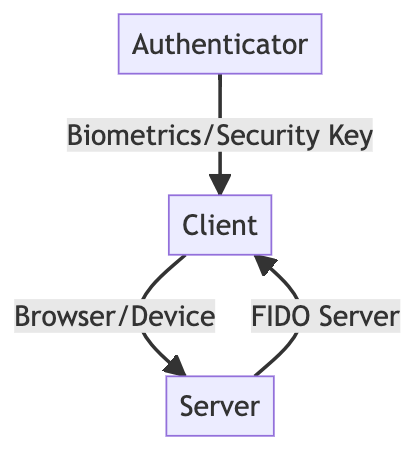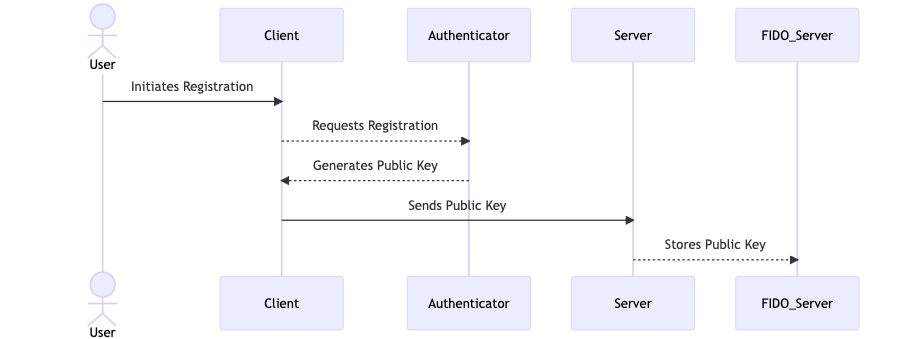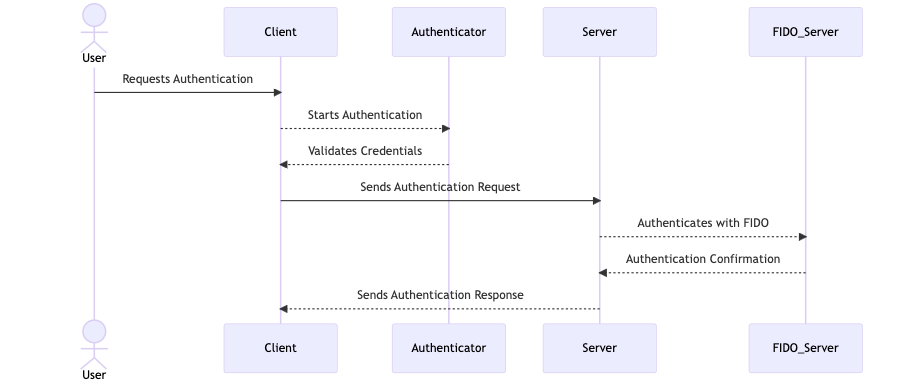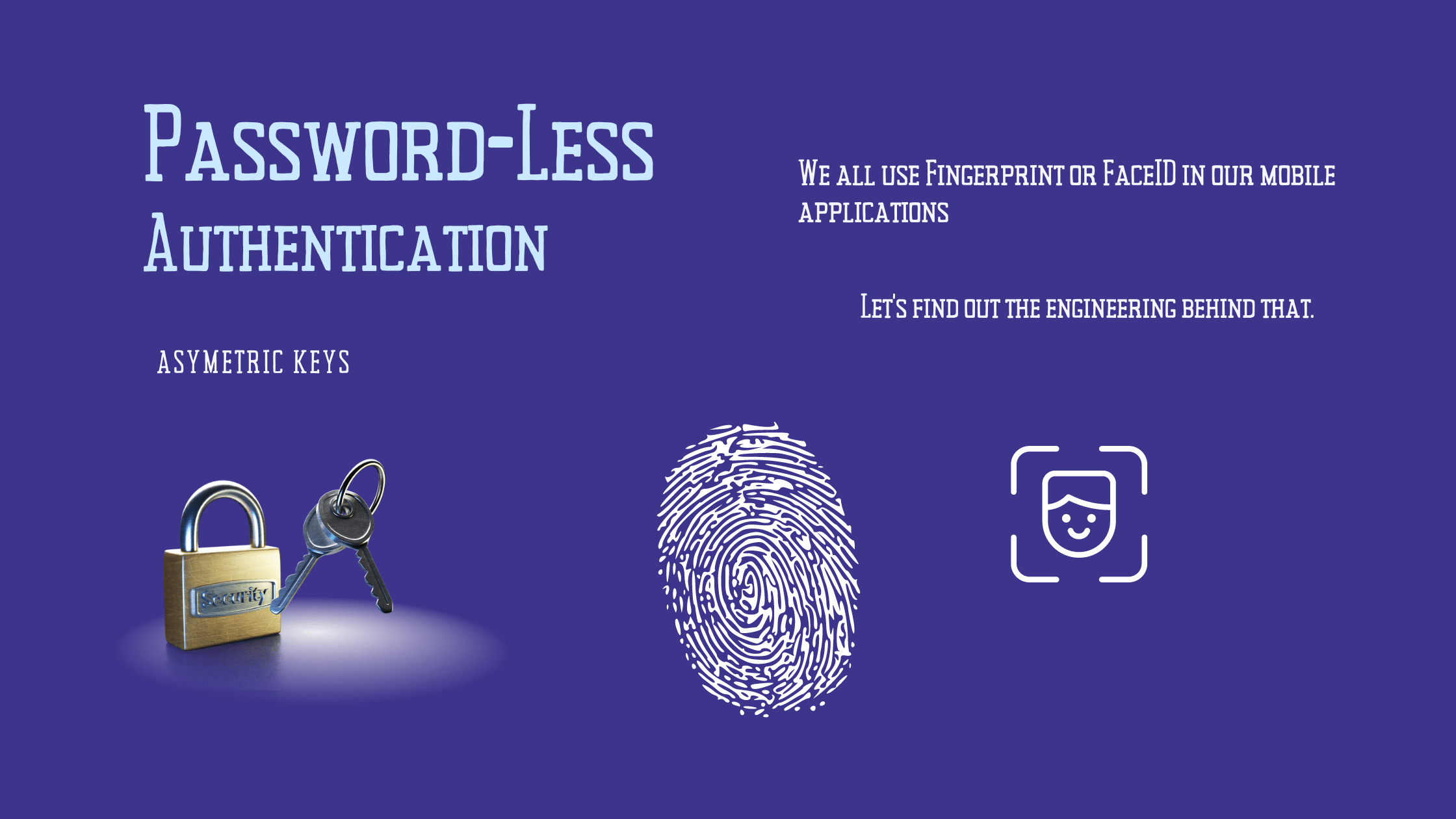Sometime back, I created this post on linked-in on explainig how passwords are not a good fit for authentication. In continuation to that, I would like to talk about FIDO Alliance.
In the ever-evolving landscape of cybersecurity, the traditional method of password-based authentication has long been at the forefront of both convenience and vulnerability.
Enter FIDO, an innovative and transformative technology that revolutionizes the way we verify identity and secure access to digital systems.
FIDO, short for Fast Identity Online, represents a paradigm shift in authentication methods, offering a more secure, seamless, and user-centric approach to safeguarding our digital lives. This groundbreaking technology is reshaping the landscape of digital security, promising to retire the age-old reliance on passwords and granting users a new frontier of secure authentication methods.
In this comprehensive exploration, we embark on a journey through the intricate world of FIDO-based authentication. We’ll delve deep into its mechanisms, understand its underlying principles, and explore how it reshapes our perception of authentication. Join us as we uncover the principles, advantages, and applications of FIDO authentication, paving the way for a more secure and user-friendly digital future.
FIDO Alliance, is an open industry consortium striving to create a more secure and user-friendly authentication standard for online access. It aims to address the vulnerabilities and limitations of traditional password-based authentication by introducing simpler, stronger, and more reliable alternatives.
The FIDO Alliance, founded in 2012, is a collaborative effort among leading technology companies, including Microsoft, Google, PayPal, Visa, and others. Its primary objective is to develop and promote open authentication standards that reduce reliance on passwords, enhance security, and improve user experiences across various online services and devices.
FIDO Standards:
FIDO U2F (Universal 2nd Factor)
FIDO U2F was one of the initial standards introduced by the FIDO Alliance. It offers a two-factor authentication (2FA) solution that strengthens login security by adding a physical security key or device alongside passwords. Users can insert a USB or NFC-based key or use biometric authentication for a more robust and convenient login process.
FIDO2
FIDO2 is a set of standards developed by the FIDO Alliance, comprising the Web Authentication (WebAuthn) and Client-to-Authenticator Protocol (CTAP). FIDO2 eliminates the need for passwords entirely by enabling passwordless authentication methods across devices and platforms. WebAuthn, specifically, allows web services to offer secure login experiences without passwords, using biometrics, security keys, or other authentication methods supported by the user’s device.
WebAuthn
WebAuthn, a crucial component of FIDO2, is a web standard that enables strong and passwordless authentication for web applications. It allows users to authenticate without passwords by utilizing biometrics, security keys, or other trusted devices registered with the user’s account. WebAuthn enhances security and user convenience by eliminating the risks associated with passwords.
These FIDO standards collectively aim to revolutionize the way users authenticate their identities online, enhancing security, simplifying access, and reducing reliance on easily compromised passwords. Through hardware-backed authentication and standardized protocols, FIDO is driving a more secure and user-friendly future for online authentication.
Choosing FIDO for passwordless authentication stems from recognizing the limitations and vulnerabilities of traditional password-based approaches. Passwords, while commonly used, come with a host of drawbacks that compromise security and user experience.
Drawbacks of Traditional Password-Based Authentication:
Security Vulnerabilities:
Passwords are susceptible to various security threats like phishing, brute-force attacks, and password database breaches. Users often employ weak or reused passwords, making them easy targets for cybercriminals seeking unauthorized access.
User Friction:
Remembering multiple complex passwords is burdensome. This often leads users to adopt simple or easily guessable passwords, undermining security. Frequent password resets can add to user frustration.
Lack of Scalability:
Traditional password systems struggle with scalability and complexity when managing user credentials across multiple applications and devices. Centralized password storage poses a significant risk if breached.
Advantages of FIDO for Passwordless Authentication:
Enhanced Security:
FIDO introduces robust authentication mechanisms such as hardware-backed security keys and biometrics. This hardware-based authentication significantly reduces the risks associated with phishing and credential theft, ensuring a higher level of security.
User Convenience:
With FIDO, users experience a more streamlined and user-friendly authentication process. They can access online services without the hassle of remembering passwords, relying instead on biometrics or hardware keys.
Privacy Protection:
FIDO standards prioritize user privacy by employing cryptographic protocols that don’t expose sensitive data. This ensures that user authentication information remains secure, reducing the risk of unauthorized access or tracking.
Interoperability and Standardization:
FIDO Alliance’s standards, like FIDO2 and WebAuthn, are industry-recognized and widely supported. This standardization ensures compatibility across devices and platforms, offering a seamless user experience.
By overcoming the limitations of traditional password-based authentication, FIDO not only enhances security but also delivers a more convenient and privacy-centric approach. Its adoption represents a crucial step towards a more secure and user-centric authentication paradigm.
FIDO (Fast Identity Online) revolutionizes authentication by employing strong cryptographic principles, eliminating the need for passwords. Its functionality revolves around three primary components: authenticators, clients, and servers.
Components in FIDO Authentication
Authenticators
These are the devices responsible for user authentication. Authenticators can be hardware-based (like USB security keys) or built into devices (biometric sensors or TPMs). They securely store user credentials and generate cryptographic keys used in the authentication process.
Clients
The client represents the user’s device or browser where authentication occurs. It interacts with the authenticator and the server during the authentication process. Web browsers, native mobile apps, or desktop applications can act as FIDO clients.
Servers
Servers manage user authentication. They interact with the client and the authenticator to verify user identities. The server validates authentication requests, confirming the user’s identity without receiving sensitive information like passwords.

FIDO Authentication Flow
FIDO2 and WebAuthn
Registration
 The client generates a new key pair and requests the authenticator to create credentials for the user.
The authenticator creates the credentials and returns a public key to the client.
The client generates a new key pair and requests the authenticator to create credentials for the user.
The authenticator creates the credentials and returns a public key to the client.The client sends the public key and additional registration data to the server. The server verifies the data and registers the user, associating the public key with the user’s account.
Authentication
When authentication is required, the client requests authentication from the authenticator.
The authenticator verifies the user’s identity using stored credentials and generates an authentication assertion.
The client sends the authentication assertion to the server.
The server validates the assertion using the stored public key associated with the user’s account.

Technical Process
Cryptographic Operations
FIDO employs asymmetric cryptographic operations using public and private keys to create secure authentication credentials. Public keys are used to verify signatures while private keys are securely stored on the authenticator.
Secure Authentication
FIDO’s reliance on hardware-backed security and biometrics ensures a higher level of security compared to traditional password-based systems. Credentials are bound to specific devices or biometric attributes, reducing the risk of phishing or unauthorized access. By leveraging robust cryptographic principles and hardware-backed security, FIDO2 and WebAuthn redefine authentication, offering a more secure and user-friendly alternative to traditional password-based systems.
Implementing FIDO authentication in applications involves a few key steps
Choose FIDO2 or WebAuthn Libraries: Select a library or SDK that supports FIDO2 or WebAuthn. Libraries like WebAuthn.io, WebAuthn.me, or authenticator libraries provided by hardware manufacturers (e.g., Yubico, Google Titan) facilitate integration.
Server-Side Implementation:
2.1 Registration Process: Generate a challenge: Create a unique challenge to verify the registration process. Send the challenge to the client: Send the challenge and other registration data to the client. Upon receiving registration data, store the public key associated with the user’s account.2.2 Authentication Process: Generate authentication challenge: Create an authentication challenge for the user. Send challenge to client: Pass the challenge to the client for authentication. Validate assertion: Upon receiving the assertion, validate it using the stored public key associated with the user’s account.
Client-Side Implementation:
3.1 Registration: Get credentials: Retrieve the credentials from the authenticator. Create a public key credential: Use the received credentials to create a public key credential. Send registration data: Send the public key credential and other data to the server for registration.3.2 Authentication: Get assertion: Retrieve the assertion from the authenticator. Create assertion: Use the received assertion to create an authentication assertion. Send authentication data: Send the authentication assertion to the server for validation.
Integration into Application: Embed FIDO authentication into the login flow of your application. Ensure compatibility: Ensure that the application supports FIDO2 or WebAuthn protocols and can interact with authenticators securely.
Implementing FIDO authentication requires handling cryptographic operations, ensuring secure communication between the server and client, and integrating the authentication flow seamlessly into your application’s login process. The specifics might vary based on the chosen libraries or SDKs and the platform used for application development.
Benefits of using FIDO
FIDO offers a range of benefits that significantly improve security and enhance the user experience:
Improved Security
Addressing Password Vulnerabilities
Traditional passwords are susceptible to various security risks like phishing, brute-force attacks, and password database breaches. FIDO addresses these vulnerabilities by:
Eliminating Passwords
FIDO-based authentication replaces passwords with cryptographic keys stored securely on devices or hardware tokens.
Phishing Resistance
FIDO utilizes public-private key pairs that differ for each service, thwarting phishing attempts where credentials are typically stolen.
Strong Authentication
Multi-Factor Authentication (MFA)
FIDO often operates as an MFA method, providing an additional layer of security. It combines something the user has (a device or token) with something they know (a PIN or biometric data).
Biometric Integration
FIDO leverages biometric data like fingerprints or facial recognition, ensuring strong authentication while maintaining convenience.
Enhanced User Experience
Convenience and Ease of Use
Users are freed from the burden of remembering complex passwords. Authentication becomes a simple, seamless process, usually involving a biometric scan or a hardware token.
Reduced Friction
FIDO minimizes user effort by eliminating the need to repeatedly enter passwords or PINs, streamlining the login experience across various devices and services.
Cross-Platform Compatibility
Interoperability
FIDO standards (FIDO2 and WebAuthn) are supported across multiple browsers, operating systems, and devices, ensuring consistent authentication experiences irrespective of the platform.
By mitigating common password-related risks and providing a smoother, more user-friendly authentication process, FIDO significantly enhances both the security and usability aspects of digital identity management.
FIDO Adoption Across Industries
Financial Services
Online Banking
Banks and financial institutions leverage FIDO to secure customer accounts, providing secure authentication without passwords.
Payments
FIDO is used in payment processing, enhancing security in digital transactions, especially in e-commerce and mobile payments.
Technology and Enterprise
Enterprise Authentication
Many organizations deploy FIDO for employee access to networks, systems, and sensitive data.
Cloud Services
FIDO is integrated into cloud services for secure access and identity verification.
Healthcare and Government
Healthcare Data Security
FIDO ensures secure access to patient records and sensitive medical data.
Government Services
FIDO-based authentication secures citizen access to government portals and services.
Successful Use Cases
Google:
Android Devices:
Google integrated FIDO2 into Android, allowing users to log in to services via fingerprint or screen unlock code across apps and websites.
Microsoft:
Azure Active Directory
Microsoft supports FIDO2 for Azure AD, enabling secure authentication for enterprise users.
E-Commerce Platforms:
Online Retail
Major e-commerce platforms integrate FIDO for secure and seamless customer logins during checkout processes.
Social Media and Web Services
Twitter and Facebook
Adoption of FIDO2 and WebAuthn for user authentication, enhancing security and user experience.
These use cases showcase how FIDO authentication is gaining momentum across various sectors, emphasizing its versatility and effectiveness in securing user identities and sensitive data across diverse applications.
Challenges and Considerations in FIDO Adoption:
Adoption Challenges:
Legacy Systems
Integrating FIDO authentication into existing systems might be complex, especially in legacy environments.
User Familiarity
Educating users about FIDO and transitioning them from traditional passwords could pose initial adoption challenges.
Security Concerns:
Device Dependency
Relying on authenticator devices might raise concerns if users lose or don’t have access to these devices.
Phishing Risks
Although FIDO reduces phishing risks, user interaction is still involved, and attackers might attempt to deceive users into authenticating on rogue websites.
Implementation Considerations:
Regulatory Compliance
Adhering to industry-specific regulations while implementing FIDO is essential, especially in finance and healthcare.
Authentication Flows
Designing seamless and intuitive authentication flows that accommodate different authenticator types and user scenarios.
User Privacy:
Data Protection
Ensuring user data protection and privacy when storing biometric information or unique identifiers used for authentication.
Consent Management
Obtaining and managing user consent for storing and utilizing biometric or personal data. Addressing these challenges involves meticulous planning, user education, and a well-structured implementation strategy. It’s crucial to balance security enhancements with user convenience and to proactively manage potential pitfalls during the adoption of FIDO authentication systems.
Advancing Security and User Experience with FIDO FIDO authentication represents a monumental shift from traditional password-based security methods, offering a potent combination of heightened security and enhanced user convenience. By eliminating the vulnerabilities inherent in passwords, FIDO significantly strengthens the authentication landscape.
Security Advantages: FIDO mitigates password-related risks such as phishing, credential stuffing, and brute-force attacks. Its reliance on cryptographic authentication and biometric factors ensures a robust defense against various cyber threats.
User-Centric Approach: FIDO’s emphasis on user experience is a game-changer. It simplifies authentication processes, reducing friction for users while bolstering security measures. The ease of use, coupled with increased security, creates a seamless and efficient authentication experience.
The Future of Authentication: As industries and users recognize the limitations of traditional passwords, FIDO stands as the beacon for a passwordless future. Its standards, like FIDO U2F, FIDO2, and WebAuthn, provide a roadmap for a secure, convenient, and standardized authentication method.
In essence, FIDO isn’t merely an alternative authentication mechanism; it’s a transformative force reshaping how we approach digital security. Embracing FIDO isn’t just a choice; it’s a strategic step towards fortifying digital identities and ensuring a safer online ecosystem for businesses and users alike.
